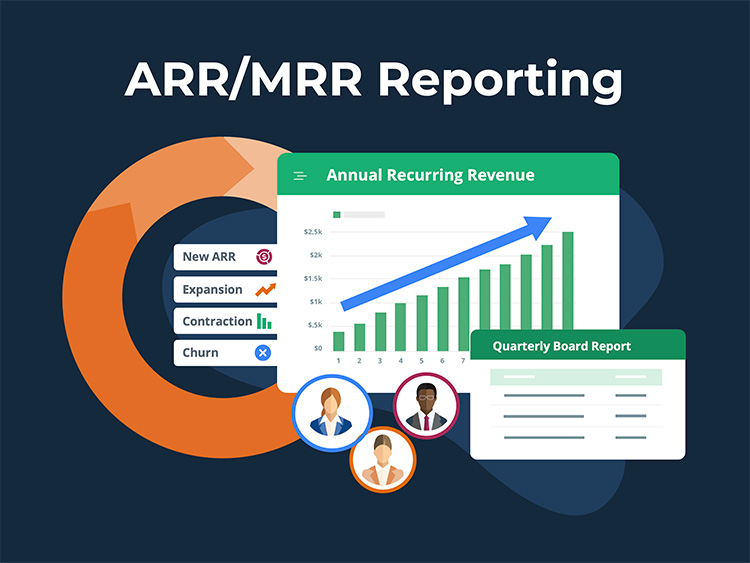Summary
Accurately calculating Annual Recurring Revenue (ARR) for SaaS companies with usage-based pricing is crucial for financial transparency and investor confidence. While traditional subscriptions are straightforward, variable usage fees introduce complexity. You can master the best methods for determining usage-based ARR, understand the framework for deciding when to include these fees, and effectively communicate your approach to stakeholders. Confidently report your company’s true recurring revenue by applying these strategies.
Key Takeaways
- Usage-based revenue can be included in ARR calculations if its patterns are predictable and consistent over time.
- The most common approach for usage-based ARR involves annualizing GAAP usage revenue from prior periods, such as multiplying the past three months’ revenue by four.
- Assessing whether usage-based fees are truly recurring requires evaluating consistency across the entire customer base, not just individual accounts.
- A structured framework helps companies determine the appropriateness of including usage-based fees in ARR, considering factors like predictability, seasonality, and specific customer segments.
- Transparently documenting, obtaining board approval for, and consistently communicating your ARR calculation policy to all stakeholders is vital for investor trust and clarity.
If you prefer a quick, skimmable version, we’ve also created a Q&A summary of this guide.
Annual recurring revenue (ARR) is a relatively straightforward metric to calculate for SaaS companies with traditional subscription pricing. However, when variable fees are introduced under usage-based pricing, the calculations become more complex. In this article, we’ll explain the best approach to calculating ARR for usage-based pricing, showing the key steps and a real-world example.
TL;DR
If usage is predictable and consistent it can be included in ARR. You can calculate the ARR by annualizing GAAP usage revenue from the past three months. Add the ARR from usage-based pricing to the fixed fee subscription ARR to arrive at total ARR.
Formula for Calculating ARR for Usage-Based Pricing
The most common approach is to annualize the GAAP revenue from usage-based fees over prior periods. For example, you might choose to annualize the usage-based revenue from the past 3 months. To calculate the ARR, you would multiply the usage revenue for the prior three months by 4.

There are several variations on annualizing GAAP revenue. Alternatives include:
- 12 x last month’s GAAP revenue
- 4 x last quarter’s GAAP revenue
- 1 x trailing twelve month’s GAAP revenue
Note, that we made the assumption that usage-based revenue should be included in the ARR. That may not always be the case. We’ll discuss how to decide whether to include it or not in a later section.
Is Usage-Based Pricing Truly Recurring Revenue?
Recurring revenue is capitalism’s favorite business model. Investors love the predictable and consistent nature of the revenue streams. However, the concept of recurring revenue is aspirational as there are few revenue streams that are truly recurring. For example, traditional fixed-fee subscription contracts such as SaaS contracts are generally considered recurring revenue. However, if you take a closer look you will find that there are changes to monthly fees generated from a meaningful percentage of the accounts. Upgrades, downgrades, paused subscriptions, late renewals, and churn all contribute to ups and downs in subscription revenue. In many cases the gains offset the losses resulting in what results in a consistent, predictable pattern. Fees generated from usage-based pricing are not truly recurring either, when viewed on a customer-by-customer basis. However, they are often relatively consistent and predictable when you view the total usage-based fees being generated across the entire customer base.
Generally, you will find that there are two types of usage-patterns:
- Consistent Usage – Larger customers with more predictable and consistent usage patterns. Many of these accounts will be on annual contracts with prepaid credits or monthly minimum structures that drive more predictable behavior.
- Inconsistent Usage – Smaller customers on monthly plans often have less predictable patterns. In any given month some may decline usage and others may increase.
In many cases, the inconsistent usage customers generate only a small percentage of the overall revenue stream, and the monthly variances are lost in the noise. Also, consider that the ups and downs in the usage patterns of individual customers often combine to offset one another in a way that results in predictable and consistent patterns.
Three Ways to Calculate ARR
White Paper
Learn the differences in approaches for
- Start date – Contract date or implementation?
- Revenue streams – Monthly plans? Usage?
- Formulas – MRR x 12? Or TCV / contract length?
Should Fees from Usage-Based Pricing be included in ARR?
There is no general consensus on whether usage-based pricing fees should be included in recurring revenue calculations, such as ARR. If you review the SEC filings of publicly traded SaaS companies you will find that some include usage in ARR, while others do not. Companies decide on a case-by-case basis. Your company should take the same approach. Here is a framework for deciding on whether it is appropriate to include fees from usage-based pricing in your ARR reporting:
1) Usage is Predictable and Consistent on a Month-over-Month Basis
Add up the total revenues generated from usage-based pricing fees over the past 12 months. Is the revenue predictable and consistent? Is it flat or trending upwards (or downwards)? If so, then it is consistent with the principles of recurring revenue and you should consider including the usage-based fees in your ARR calculations.

2) Usage is Not Predictable or Consistent on a Month-over-Month Basis
If the fees your company is generating from usage-based pricing are not consistent and predictable, then it is not really recurring. It may be misleading to investors to include usage-based fees in your ARR reporting.

3) Usage is Seasonal, but Consistent on a Year-over-Year Basis
However, there may be reasons to make an exception, such as seasonality in the usage patterns. For example, suppose you run an e-commerce platform for which usage spikes in the months leading up to the December holidays but then returns to normal in January. In this scenario you might be able to average the usage-based revenue over a twelve-month period to arrive at a number that is more recurring in nature.

4) Usage is Predictable and Consistent for some Customer Segments but not Others
Another approach is to include ARR for customer segments that have consistent, predictable revenues and exclude the rest. For example, the usage patterns for customers on annual contracts such as those with prepaid usage and monthly minimums are likely to be much more consistent than those on monthly pay-as-you-go plans. The monthly customers may not have any usage at all in certain months.

How to Communicate with Investors on ARR for Usage-Based Pricing
There is no generally agreed-upon approach to calculating ARR from usage-based pricing. What is important is to define a policy, share it with key stakeholders, and apply it consistently.
Best practice is to follow these five steps:
- Document the ARR Calculation Approach – The accounting department should document how the ARR calculation is performed, detailing which categories of revenue are included and which ones are not. Examples of revenue streams to decide upon include not only usage-based pricing, but also professional services, proof of concept pilots, and customers on monthly contracts.
- Obtain Board Sign Off – Once the policy is drafted, share it with the senior management team, outside investors, and the board of directors. The CFO should build consensus with all stakeholders and obtain board sign-off on the policy.

Best practice is to follow these five steps:
- Train Key Employees – Host live sessions with key members of the accounting, revenue operations, billing, financial planning and analysis teams that are involved with calculating and reporting SaaS metrics. Ensure all key employees understand what is and is not included in the ARR formula.
- Enforce the Policy in Systems – The accounting team performing monthly ARR reports should ensure that all systems and spreadsheets being used in the recurring revenue calculations adhere to the policy.
- Communicate the Policy to Investors – When raising additional outside capital or reporting results to existing investors, be sure to include an explanation of how the ARR calculation is performed in the footnote of presentation slides or the appendix.
Conclusion
Ultimately, accurately incorporating usage-based pricing into your ARR requires a well-defined policy. By systematically documenting your calculation approach, securing board approval, and transparently communicating with all stakeholders, you establish credibility and avoid confusion. This ensures your reported ARR truly reflects your company’s financial health and recurring revenue streams.
ARR Reporting Software
from Ordway
Track new, expansion, contraction, renewal, and churn ARR. Segment ARR by product line, geographic region, and legal entity. Report on ARR growth rates.
Frequently Asked Questions
Do SaaS companies include usage-based pricing in MRR/ARR?
Many SaaS companies do include revenues from usage-based pricing in MRR/ARR if the revenue streams are predictable and consistent.
What formula should I use to cacluate ARR for usage-based pricing?
4 x last quarter’s GAAP revenue from usage-based fees. You can also annualize the GAAP revenue from usage-based fees by multiplying last month’s fees x 12 or the past six month’s fees by 2.
What is the difference between forecasted and normalized usage?
Forecasted usage = sales optimism. Normalized usage = historical averages. For ARR, rely on normalized usage to avoid inflation.
How do you calculate GAAP revenue for usage-based pricing?
For most SaaS and cloud companies, the recognized revenue is the amount invoiced for the same period. Consult ASC 606 and IFRS 15 guidelines to identify the best policy.
How to avoid confusion about ARR calculations for usage-based pricing?
Document your ARR policy. Obtain board sign-off for the policy. Over-communicate it to investors in footnotes and definitions whenever ARR is presented.








